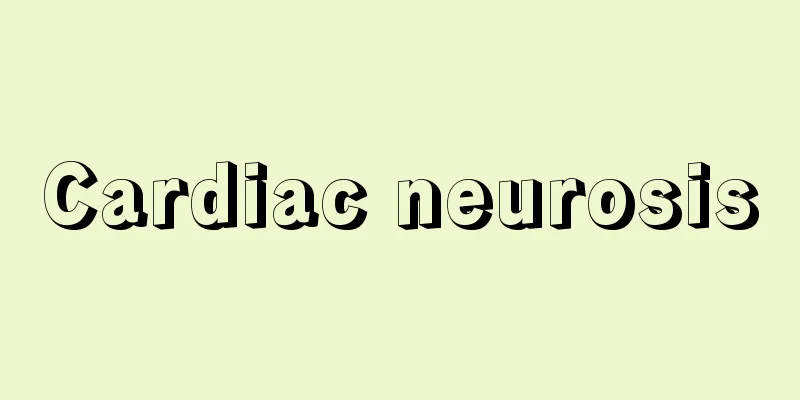Cardiac neurosis

|
Cardiac neurosis is a relatively common disease, which is also called functional heart disease. It can cause a variety of symptoms. Patients will experience palpitations, chest tightness, difficulty breathing and other symptoms. This disease mostly occurs in middle-aged and young people. Generally speaking, as long as good treatment is carried out and good conditioning is strengthened in daily life, its prognosis is very good. Let's take a look at this aspect. Cardiac neurosis Cardiac neurosis is also known as functional heart discomfort, neurocirculatory asthenia or effort syndrome, cardiovascular neurosis, and is called neurocirculatory dysfunction or neurocirculatory asthenia or hypersensitivity in foreign countries. It is a special type of neurosis and also a very common cardiovascular disease. The main manifestation is cardiovascular dysfunction, which may be accompanied by other manifestations of neurosis. The symptoms are varied, the most common of which include palpitations, precordial pain, chest tightness, shortness of breath, dyspnea, dizziness, insomnia, and nightmares. It mostly occurs in young and middle-aged people, with the highest incidence among those aged 20 to 40. It can also be seen in middle and senior white-collar workers, middle-aged and elderly people with empty-nest diseases, patients after myocardial infarction or stroke, and even some teenagers. It is more common in women, especially menopausal women. There are no obvious organic lesions in the physical examination of this disease. Although the symptoms are very severe, the prognosis is good. Causes Due to the influence of factors such as anxiety, tension, emotional excitement, and mental trauma, the excitation and inhibition processes of the central nervous system are disturbed, and the cardiovascular system regulated by the autonomic nervous system also becomes disordered, causing a series of symptoms of excessive sympathetic nerve tension. In addition, excessive fatigue, too little physical activity, and lack of proper exercise of the circulatory system result in the inability to adapt to the slightest activity or fatigue, thus producing excessive cardiovascular response and causing this disease. Clinical manifestations It is more common in young and middle-aged women, with a variety of cardiovascular symptoms, which may be mild or severe but are usually not serious. There is usually no evidence of organic heart disease, but it may exist at the same time as organic heart disease or occur on the basis of the latter. Common symptoms are palpitations, chest pain, chest tightness, chest congestion, shortness of breath, accompanied by insomnia, irritability, tension, anxiety, depression, etc. |
<<: Onychomycosis softens and falls off
>>: How to check neurological problems
Recommend
Is it useful to use a breast pump when milk is low?
After a baby is born, its stomach and intestines ...
What medicine is more effective for bitter mouth, dry mouth and bad breath?
From the perspective of traditional Chinese medic...
A young singer was diagnosed with stomach cancer! He usually has a regular schedule, why is this happening?
Why are more and more young people suffering from...
The early symptoms of nasopharyngeal carcinoma are usually complicated
Nasopharyngeal carcinoma is a common disease and ...
The role of glycine
Glycine is a relatively special substance. Accord...
What kind of care should liver cancer patients take in daily life? These 5 key care points for liver cancer patients cannot be missed
In recent years, due to improper living habits an...
Can mid- to late-stage ovarian tumors be cured?
I have introduced the issue of ovarian cancer to ...
Can silver remove moisture?
Dampness can harm human health, so the body must ...
Almost all patients with gallbladder cancer have digestive tract symptoms
Almost all patients with gallbladder cancer have ...
Does temporomandibular joint surgery leave scars?
Temporomandibular joint surgery will result in sc...
Does the uterine cancer vaccine have side effects? Can the uterine cancer vaccine cause paralysis?
Cervical cancer is a health killer for adult wome...
What is the cause of vascular spots
In daily life, everyone has plaques in their bodi...
Is it easy to get lung cancer if there is too much kitchen fumes? Is it possible
Lung cancer has a high incidence rate and is also...
Can enhanced CT confirm renal hamartoma?
Renal hamartoma can be diagnosed not only through...
Multiple B vitamin tablets
Vitamin is one of the essential elements for our ...









